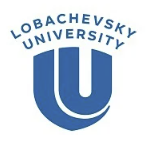Introduction
Lobachevsky State University of Nizhni Novgorod, referred to as UNN, is a top comprehensive university in Russia, famous for its outstanding achievements in teaching, scientific research and academic exchanges.
Overview
Student size: more than 30,000 students, including more than 2,300 international students, from 97 countries.
Faculty: more than 2,000 academic staff, including 400 professors, 1,200 associate professors and assistant professors.
History and establishment time
The university was founded on January 17, 1916. It was originally established as the Nizhni Novgorod People's University, one of the three people's universities in Russia. In 1918, the Nicholas II Polytechnic Institute in Warsaw was evacuated to Nizhni Novgorod. After merging with it, the People's University became the first higher education institution to obtain the status of a national university during the Soviet period. From 1932 to 1990, the school was renamed Gorky State University. In 1990, it was restored to its original name. In 2009, it was renamed the National University of Nizhni Novgorod. In 2000, it was awarded the status of a national research university.
School Strength
Teaching Quality: As one of the leading comprehensive universities in Russia, it offers a wide range of undergraduate, master's and doctoral programs, covering natural sciences, engineering technology, humanities and social sciences, medicine and other fields. It focuses on cultivating students' innovative thinking and practical ability, and adopts modern teaching methods and means, such as case teaching, practical teaching, online teaching, etc., to improve students' comprehensive quality and employment competitiveness.
Scientific Research Achievements: The school has invested heavily in scientific research and has achieved a series of important scientific research results, especially in physics, mathematics, computer science, biology, medicine and other fields. It is at the international leading level. The supercomputer "Lobachevsky" installed in 2014 has a peak performance of 570 trillion floating-point operations. It is the third most powerful supercomputer in Russia and one of the most powerful supercomputers in the world. The school also actively carries out international scientific research cooperation, and has established cooperative relations with universities and scientific research institutions in many countries to jointly carry out scientific research projects and academic exchange activities.
International Exchange: It has established successful partnerships with 95 universities and education centers around the world. Since 1991 Since 2007, the university has launched unique Russian-French and Russian-Italian university projects. After graduation, students can obtain diplomas from two educational institutions in the two countries. In addition, the school has actively participated in the cooperation projects between the European Union and the Volga Federal District of Russia, promoting regional education and scientific research exchanges.
Institutional nature
Public research university.
Educational philosophy
Committed to cultivating high-quality talents with innovative spirit, practical ability and social responsibility, focusing on the comprehensive development and personalized cultivation of students, encouraging students to actively participate in scientific research and social practice activities, improving students' comprehensive quality and competitiveness, and contributing to social and economic development.
Key laboratories and disciplines
Key laboratories: The school has a number of advanced scientific research laboratories, such as the laboratories of the Institute of Applied Mathematics and Cybernetics and the laboratories of the biomedical cluster, which provide researchers with good research conditions and platforms.
Key disciplines: Physics, mathematics, computer science, biology, medicine, economics, law and other disciplines are the key disciplines of the school, and have achieved remarkable results in teaching and scientific research. Physics ranks 583rd in the 2022-2023 U.S. News Global University Rankings.
Department
The school consists of 19 colleges and 6 The university consists of 10 research institutes, including the School of Information Technology, the School of Mathematics and Mechanics, the School of International Relations and World History, the School of Linguistics and Journalism, the School of Economics and Entrepreneurship, the School of Biology and Biomedicine, the School of Graduate and Doctoral Studies, the School of Military Training, etc., as well as the Department of Chemistry, the Department of Radio Physics, the Department of Physics, the Department of Law, the Department of Social Sciences, the Department of Physical Education and Sports, the Department of Regional Talent Training, the School of Public Administration, and the Advanced School of General and Applied Physics.
Ranking
2022-2023 U.S. News Global University Ranking: 1455th.
2022 QS Emerging Europe and Central Asia Ranking: 89th.
2025 QS World University Ranking: 1001-1200.
Expenses
Tuition fees: Undergraduate courses, starting from $51 per year for Russian local students and $647 per year for international students; Master's courses, starting from $51 per year for Russian local students and $5,000 per year for international students.
Living expenses: about $151,800 per year Ruble.
Campus
Teaching facilities: The campus has modern teaching facilities, such as computer laboratories, libraries, gymnasiums, student dormitories, etc., which provide students with good learning and living conditions. The school's library has a rich collection of 2.2 million books and is an important place for students to study and research.
Campus environment: Located in Nizhny Novgorod, the city is an important industrial and cultural center in Russia, providing students with abundant internship and employment opportunities, as well as colorful cultural and entertainment activities.
-

Peter the Great St.Petersburg Polytechnic University
-
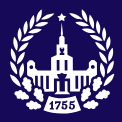
Moscow State University M. V. Lomonosov
-
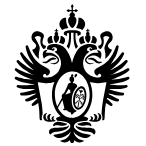
St. Petersburg State University
-
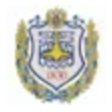
Bauman Moscow State Technical University
-

Tomsk State University
-
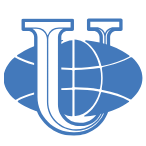
Peoples' Friendship University of Russia
-

Don State Technical University
-

Moscow Institute of Physics and Technology
-
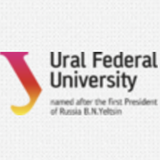
Ural Federal University
-

Kazan Federal University
-

Mesoamerican University
-

Istmo University
-

Mariano Galvez University of Guatemala
-

Regional University of Guatemala
-

Galileo University
-

Francisco Marroquín University
-

Rafael Landívar University
-

University of the Valley of Guatemala
-

University of San Carlos of Guatemala
-

Technological Institute of Tlaxcala Plateau
-

Golfo University
-

Technological University of South Sonora
-

Technological University of Huejotzingo
-

Tizimín Institute of Technology
-

Chilpancingo Institute of Technology

